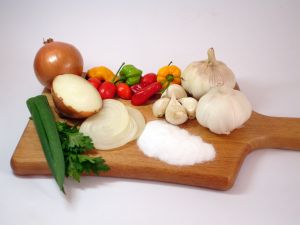I have been at this serving game for quite a while. I have worked for countless chefs, pitched thousands of specials, and guided over 100,000 people through their dining experience. I even write a blog called
Foodie Knowledge to help educate other people about food. It is not a bad little resume for establishing foodie cred. Still, there are some cooking terms that I am not certain on. There are many more that I see often misused in restaurants.
Words have meanings. The difference between chutney and compote is greater than what looks good on the evening’s menu. Many servers and guests will bluff their way through describing exotic sauces and blends. They often do so with confidence to appear to be correct. Even I am guilty of this. So today, I wanted to give a firm definition of some of these terms to prevent you (and I) from ever doubting that our definitions are correct.
Chutney: Combination of fruit, vinegar, sugar, and spice. Can have a variety of textures, but should contain some level of spice by definition.
Compote: Fruit that has been slowly cooked with a simple syrup and is served chilled.Â
Aioli: An emulsified sauce made of oil and garlic with an emulsifying agent (usually egg). Garlic infused mayonnaise is the most basic aioli. Many restaurants will start with mayonnaise as the base of their aiolis.
Remoulade: An aioli served chilled with a variety of herbs and spices. Traditionally this will include: mustard, capers, anchovies, and pickles. Similar to tartar sauce.
Cajun Remoulade: Often referred to as Creole or Louisiana Remoulade. A derivative of it’s French namesake that is a reddish color from the addition of paprika. Generally contains more spice than the original.
Beurre Blanc: An emulsified butter sauce made with white wine or vinegar. Translates literally from French to mean “white butter.â€
Beurre Rouge: A Beurre Blanc made with red wine. Translates to “red butter.â€
Duxelles:  Minced mushrooms, shallots, and herbs that are sautéed in butter until they have been reduced to a paste.
Tapenade: Finely diced olives and capers blended with olive oil to form a paste. Anchovies, lemon, garlic, and other spices are often added for flavor.
Mirepoix: Celery, carrots, and onions traditionally. Some chefs will add peppers to this mix. This can be diced and used raw, roasted, or sautéed. It forms the flavor base of many dishes and an integral part of the creation of stock.
There are a myriad of cooking words that are used (and misused) in the restaurants we dine at. These are just a few of the more common ones. They do help us better understand what we eat and help build upon our knowledge of the basics. Hopefully this post will help you be a more educated guest at your next meal. Future definitions are sure to follow.



